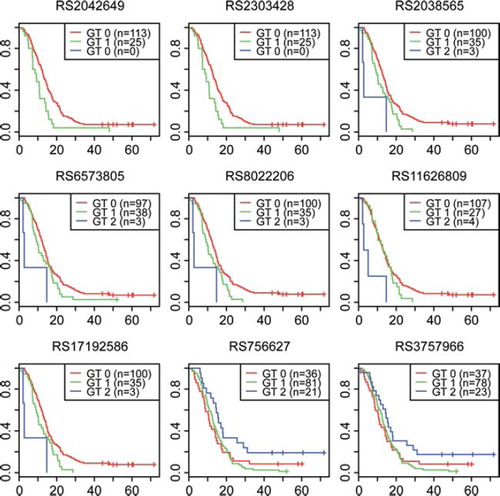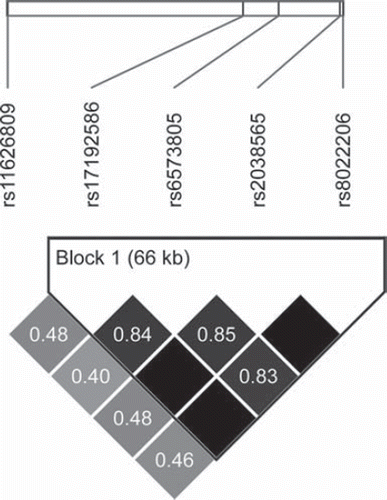Figures & data
Table I. Distribution of clinical characteristics.
Figure 2. Kaplan-Meier plots illustrating the survival times related to the different gene variants in the Swedish-Danish dataset. GT 0, GT 1, and GT 2 represent the common homozygote, the heterozygote, and the rare homozygote, respectively. The x-axes represent survival time measured in months.

Table II. Allelic variants associated with survival, based on 121 patients in the Swedish-Danish dataset with complete data.

